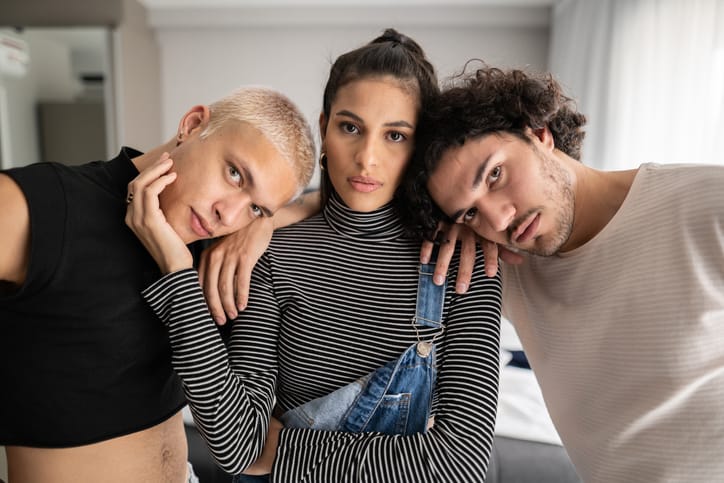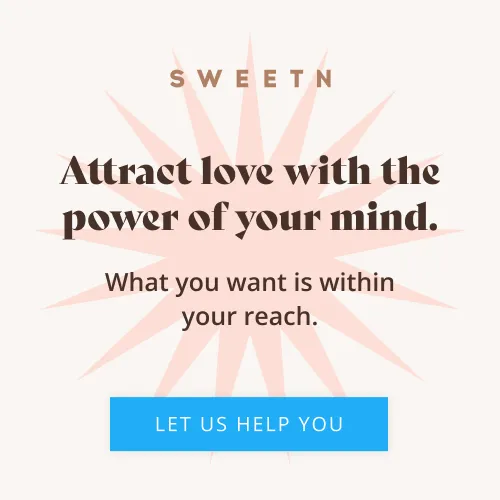You love the person you’re in a relationship with, but that’s not enough. You’re starting to wonder if there’s something more out there. Maybe someone more, perhaps? If you’re curious about polyamorous vs open relationships and if one of those arrangements might be right for you, here’s what you need to know. It should help you make a more informed decision.
Polyamory vs open relationships: What’s the difference?
What used to be pretty taboo is becoming more and more mainstream. Monogamy is no longer a foregone conclusion. According to statistics released in 2021, about 5% of the population identifies as polyamorous. The stats on open relationships a pretty similar, with about 4% of adults choosing to love this way.
Polyamory and open relationships are both forms of consensual non-monogamy, but there are key differences between the two. Polyamory refers to the practice of having multiple romantic and/or sexual partners. In this case, all parties are aware of and consent to the relationships. It’s based on the idea of ethical non-monogamy, where people can have multiple meaningful relationships with the understanding and agreement of everyone involved. As long as you’re honest about what you’re up to, it’s all good.
On the other hand, an open relationship is when a couple decides to have sexual relationships outside of their partnership, but romantic relationships are still kept between the two partners. This type of relationship is often less structured than polyamory, and the boundaries and agreements may change over time. Open relationships offer a freer arrangement vs polyamory, in many ways.
In summary, polyamory involves multiple romantic and/or sexual relationships, while open relationships are primarily focused on sexual relationships outside of the primary partnership. Both require clear communication, trust, and the consent of all involved.
It’s important to note that everyone’s experience with polyamory and open relationships is unique and may look different for each individual or couple. What’s most important is that everyone involved is comfortable and happy with the arrangements and agreements made.
How are they similar?
- They’re both types of non-monogamy. Both polyamory and open relationships involve having more than one romantic or sexual partner at the same time. While one or both partners may not always be engaged in relationships outside their primary partnership, the door is always open for this.
- No one is left in the dark. Both require the full consent and knowledge of all parties involved. In both cases, all partners must agree to the arrangement and be comfortable with the other people involved. Keeping secrets or exhibiting shady behavior is a no-go. Everything must be done openly and honestly.
- They require regular and direct communication. Good communication is crucial in both polyamorous and open relationships, as it helps to ensure that everyone is on the same page and that everyone’s needs and boundaries are respected. This isn’t so different from monogamous relationships, in many senses. Talking ensures you remain on the same page, which is vital. You can’t have a healthy, thriving partnership without communication.
- They also require trust. Trust is important in any relationship, but in non-monogamous relationships, it is especially crucial. All partners must trust each other to be honest about their activities and to respect each other’s boundaries. You also have to feel confident in polyamorous and open relationships vs monogamous ones that you’ll remain your partner’s number one priority, and that if anything changes in your arrangement, it will be discussed with you directly. In other words, it’s not for everyone.
- Both partners must be willing to be flexible. Both polyamory and open relationships require a certain level of flexibility and adaptability as partners navigate the complexities of having multiple relationships. You’ll need to make time for other partners as well as your primary one. In addition, you must be willing to let your primary partner spend time with others. With practice, you can make this potentially complicated situation work.
- Respect is the name of the game. All partners must show respect for each other and for the relationships that exist between them. This means treating each other with dignity, compassion, and understanding.
Which one is healthier, polyamory or open relationships?
It’s hard to say definitively which type of relationship is “healthier,” as both polyamory and open relationships can be healthy or unhealthy depending on various factors. From the people involved and the level of communication and trust to the level of emotional and physical safety, there are a lot of different variables to consider.
Healthy polyamorous relationships are built on strong foundations of communication, transparency, trust, and mutual respect. When these elements are in place, polyamory can provide individuals with multiple sources of love, support, and fulfillment. Similarly, healthy open relationships are built on mutual consent, clear boundaries, and open communication. They can also provide those who practice them with the freedom to explore new sexual experiences while still maintaining a strong primary relationship.
On the other hand, unhealthy relationships of either type may be marked by secrets, deceit, and a lack of communication, which can lead to feelings of jealousy, insecurity, and hurt.
Ultimately, the health of any relationship, whether monogamous or otherwise, depends on the individuals involved and their ability to communicate effectively, set clear boundaries, and respect each other’s needs and desires.




